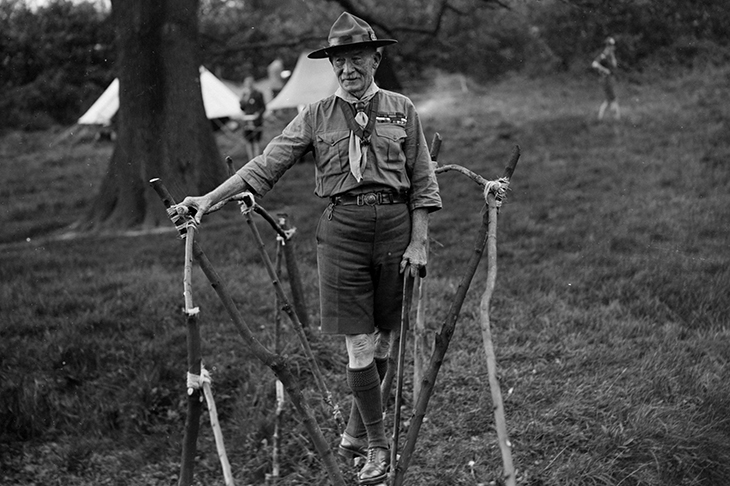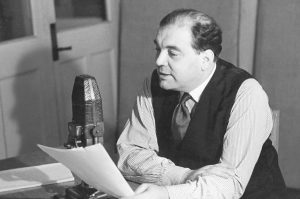Police were no match for the Black Lives Matter mob that pulled down a statue of Edward Colston last week and threw it in Bristol harbor. But Britain’s Scouts are evidently a force to be reckoned with. No sooner had Bournemouth, Christchurch and Poole Council announced that it was planning to take down a statue of Lord Robert Baden-Powell on the harbor front at Poole than the Scouts had mobilized themselves to defend it, setting up camp at its base. The council decided to board it up instead, to protect it from protesters.
The ‘Topple the racists’ website had identified Baden-Powell among its targets, claiming that the creator of the Scout movement had ‘committed atrocities against the Zulus in his military career and was a Nazi sympathizer’. It is true that Baden-Powell wrote in his diary, in 1939, that he had been reading Mein Kampf, describing it as ‘a wonderful book, with good ideas on education, health, propaganda, organization’ (although the same diary entry also lambasted Adolf Hitler for not following the ideals identified in the book). It is hard not to notice, either, the similarities in uniform between Scouts and the Hitler Youth. But is it in any way possible that Scouting was influenced by fascism?
The obvious answer is no, for simple chronological reasons. The first Scout camp organized by Baden-Powell was in 1907, when the then 18-year-old Hitler would have been nearly young enough to join in. The following year, the Scouting movement was formally established and the style of its uniform set. The Hitler Youth may have been influenced by the Scouts, however. An early Scout badge from 1911 was emblazoned with a swastika, then known only as an Indian symbol for luck. That was nine years before the Nazi party adopted it as its symbol. A Scouting movement began in Germany in 1909 but was closed down and replaced with the Hitler Youth.
The immediate influence for the Scouting movement was the Boys’ Brigade, of which Baden-Powell became Vice-President in 1903. He had also been inspired by the cadet corps running messages and performing other ancillary duties during the 217-day Siege of Mafeking in 1900. Perhaps above all else, he had been pleasantly surprised by the sales of a military manual, Aids to Scouting, which he had written in 1899. When his successful defense of Mafeking made him famous, the book became a bestseller among teenage boys. The result was a Scout camp at Brownsea Island in 1907 (hence Baden-Powell’s statue in Poole) and the foundation of a formal movement which rapidly matched the Boys’ Brigade for size.
***
Get a print and digital subscription to The Spectator.
Try a month free, then just $7.99 a month
***
Remarkably, for an organization supposedly run by a Nazi sympathizer, the Scouts went on to help resettle Jewish children saved in the Kindertransport during World War Two. Those involved were sent a card drawn and signed by Baden-Powell himself, with the words: ‘I want to thank you for helping to give friendly shelter and assistance to our distressed refugee brother.’ But that was not enough, evidently, to save Lord Baden-Powell’s reputation from the woke warriors of today.
This article was originally published in The Spectator’s UK magazine. Subscribe to the US edition here.


















